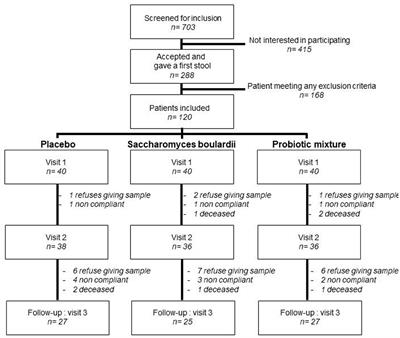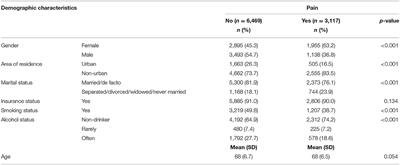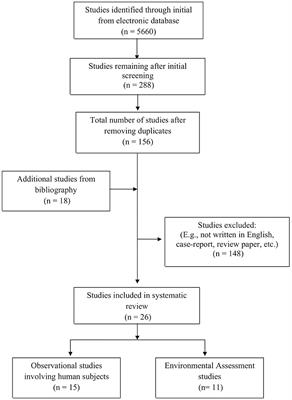Background: Pain management has become a critical problem worldwide with the aging population. More than half of older people have experienced pain with different severity. The aim of this research is to identify the characteristics of older people with body pain and the associations between pain and characteristics of demographic, health status, and health services use amongst Chinese seniors.
Methods: This cross-sectional study was based on the China Health and Retirement Longitudinal Study (CHARLS), using follow-up survey data in 2015. The national survey comprised 20,284 women and men aged 45 years or older who completed questionnaires. Data of older people who were asked whether they had troubles with body pain were extracted and analyzed. Multiple logistic regression modeling was used to determine the important indicators (demographic, health status, and health services use) amongst Chinese elderly with pain.
Results: Analyses revealed that 32.5% (n = 9,586) of Chinese people aged over 60 reported having body pain. Pain is positively associated with female gender (OR = 2.08, 95% CI 1.80–2.39, p < 0.001), living in non-urban areas (OR = 1.49, 95% CI 1.25–1.77, p < 0.001), having physical disabilities (OR = 1.45, 95% CI 1.15–1.82, p = 0.002), diagnosed with stomach diseases (OR = 1.40, 95% CI 1.20–1.64, p < 0.001), diagnosed with arthritis (OR = 1.91, 95% CI 1.66–2.20, p < 0.001), self-rating with poor health status (OR = 7.03, 95% CI 5.63–8.78, p < 0.001), self-purchased over-the-counter western medications (OR = 1.50, 95% CI 1.30–1.73, p < 0.001) and self-purchased Chinese herbal medicine (OR = 1.52, 95% CI 1.24–1.85, p < 0.001).
Conclusion: Body pain is common amongst the Chinese elderly. This research highlights the need for further nationwide studies exclusively focusing on people with pain including the elder population, and provides evidence-based insights for healthcare providers and policy-makers, to improve the quality of pain management. Future research should also pay attention to the importance of health literacy for health outcomes with regard to pain management.







